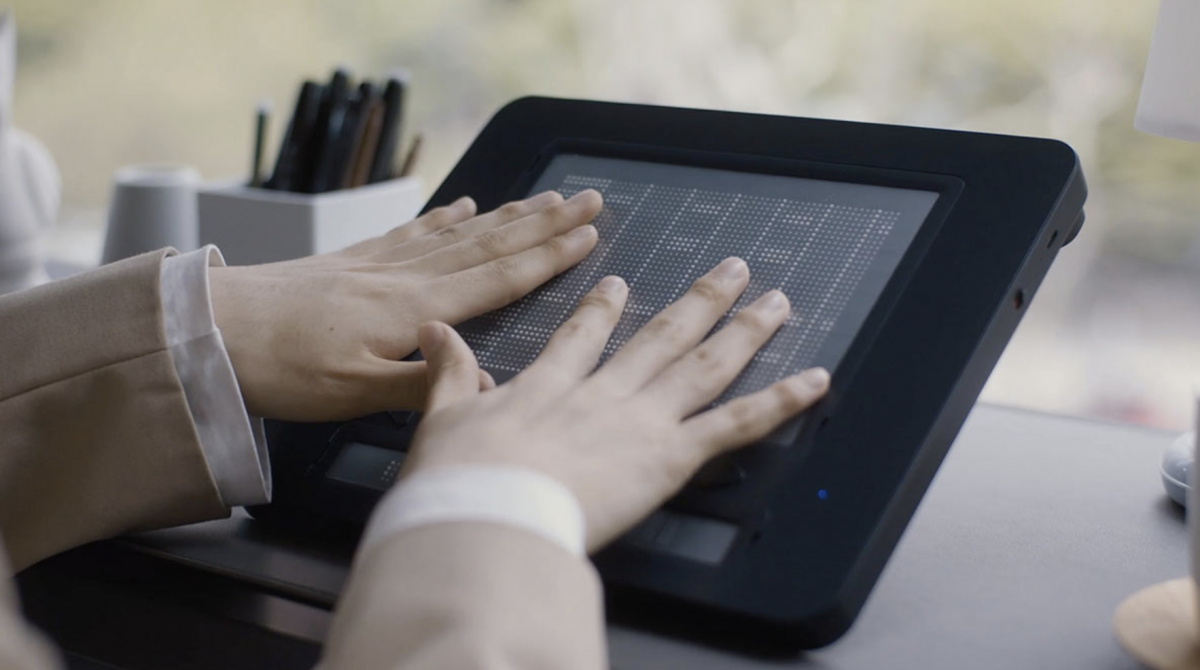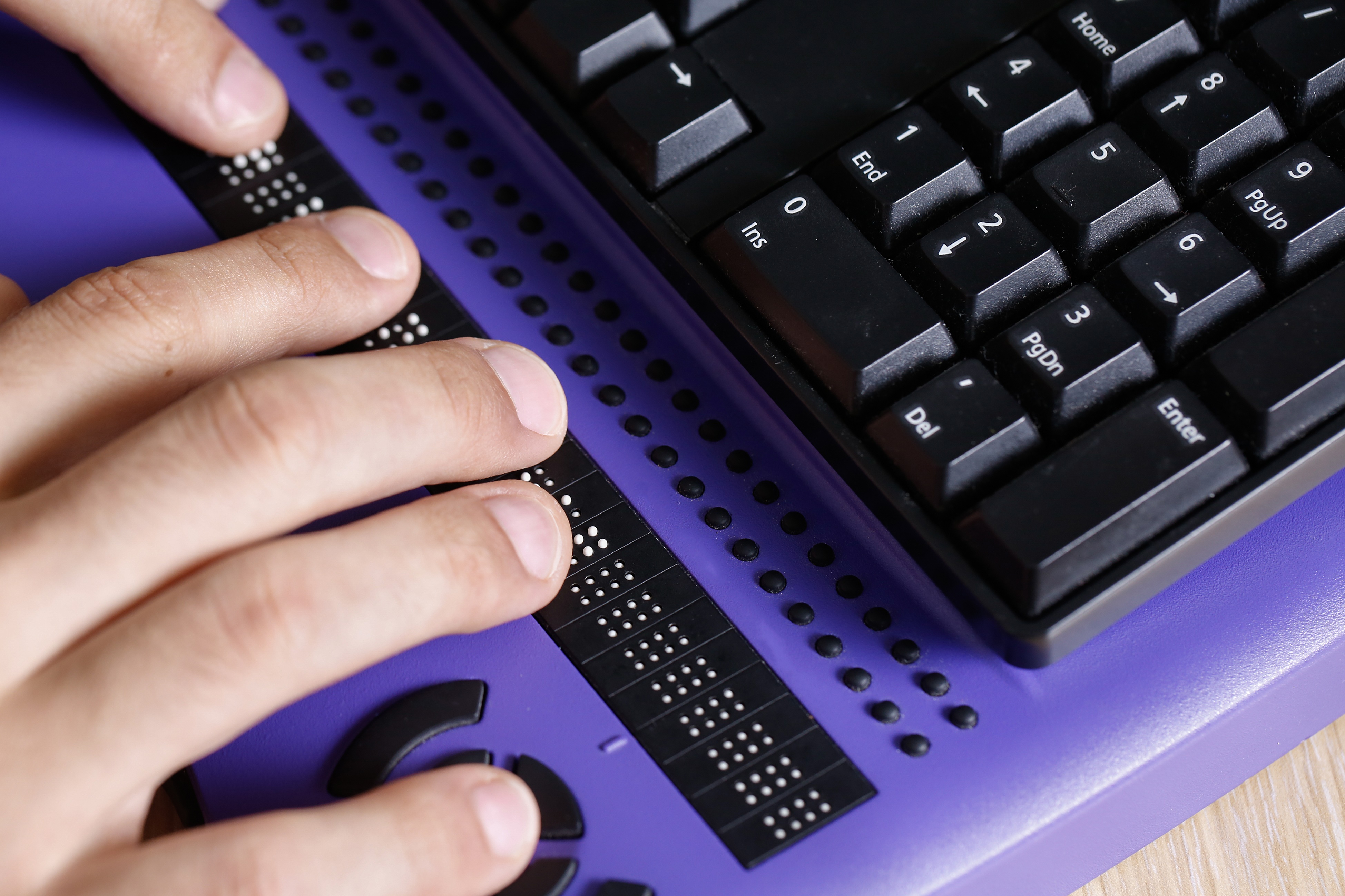Speech-to-Text Devices for Low Vision: Enhancing Convenience
Speech-to-Text Devices for Low Vision: Enhancing Convenience
Blog Article
Discover Innovative Tools Created for the Aesthetically Impaired
The advancement of ingenious tools for the aesthetically damaged represents a significant improvement in accessibility and independence. Technologies such as wise glasses with AI abilities and mobile applications developed to give auditory summaries are improving day-to-day experiences for customers. Additionally, wearable devices that use haptic comments improve ecological understanding, while modern-day Braille developments use brand-new means to engage with message. As these tools continue to advance, their influence on the lives of those with visual problems elevates important concerns concerning the future of inclusivity and freedom in different aspects of life. What exists in advance in this technical landscape?
Smart Glasses for Navigation

Smart glasses created for navigation are revolutionizing the way visually impaired individuals connect with their setting. These sophisticated devices make use of a combination of cam innovation, expert system, and auditory comments to provide real-time details regarding environments. By using barrier detection systems, clever glasses can inform users to prospective risks, making it possible for more secure movement in both familiar and strange setups.
The combination of GPS innovation further improves navigation abilities, permitting individuals to obtain acoustic directions as they relocate. This hands-free approach not just fosters independence but additionally empowers aesthetically impaired people to navigate city landscapes with raised confidence. In addition, numerous clever glasses are outfitted with functions that recognize landmarks and road signs, supplying contextual details that boosts the individual experience.
Moreover, the growth of these gadgets is continually advancing, with firms functioning to improve the precision of item acknowledgment and broaden the range of navigational functions. As clever glasses end up being more accessible and inexpensive, they hold the prospective to dramatically transform every day life for visually impaired individuals. Inevitably, these cutting-edge devices represent a vital step towards inclusivity, offering boosted mobility and a higher feeling of autonomy for individuals browsing the world around them.

Mobile Application for Daily Living
Exactly how can mobile applications enhance the daily lives of aesthetically damaged individuals? Mobile apps are changing the way aesthetically damaged customers browse their environments, handle everyday jobs, and access information. These applications provide important support via numerous functionalities, cultivating independence and boosting high quality of life.
Several cutting-edge mobile applications are developed particularly for daily living. For instance, applications like Be My Eyes connect aesthetically impaired users with sighted volunteers through video telephone calls, enabling them to receive real-time aid with tasks such as checking out labels or browsing unknown areas. Seeing AI, created by Microsoft, utilizes fabricated knowledge to describe surroundings, reviewed message, and determine things, successfully transforming a mobile phone right into an effective tool for everyday aid.
Additionally, navigating apps customized for the aesthetically impaired, such as Aira and BlindSquare, provide audio-based directions and ecological information, allowing customers to traverse their surroundings safely and with confidence. Beyond navigation and instant aid, mobile applications likewise sustain company and job monitoring, with features that help customers set tips, develop to-do checklists, and track consultations. In summary, mobile applications function as vital resources, empowering visually impaired people to lead even more independent and satisfying lives.
Wearable Technologies for Assistance
Empowerment via innovation is progressively obvious in the world of wearable gadgets made to help visually impaired individuals. These innovative tools integrate effortlessly right into day-to-day life, enhancing navigation and offering important feedback to individuals. Clever glasses outfitted with electronic cameras can read and recognize faces message out loud, enabling customers to engage more confidently in social and expert setups.
One more significant advancement is using haptic responses systems in wearable tools. These systems utilize resonances or various other tactile signals to share info about the customer's atmosphere, such as obstacles or changes in surface, boosting wheelchair and security. Wearable technologies also consist of wristbands that link to smart devices, informing individuals to notices via subtle resonances, hence enhancing connection without reliance on aesthetic cues.
As these technologies remain to progress, they are not only improving freedom for visually damaged people however also fostering a better sense of cheap reading glasses incorporation in society. By bridging the space between obstacles dealt with in day-to-day living and the possibility for autonomy, wearable modern technologies function as essential tools in the mission for equality and empowerment for those with visual disabilities.
Sound Summary Tools
Sound summary devices play a vital role in improving accessibility for visually damaged individuals, giving them with the ability to involve with visual media. Assistive technology look at this website for the blind. These tools use narrated summaries of crucial visual aspects in movies, television programs, and live efficiencies, ensuring that customers can totally understand the context and emotions conveyed through visuals
Audio description can be integrated into numerous platforms, consisting of streaming solutions, movie theater screenings, and live theater. Several popular streaming services currently consist of audio summary as an availability attribute, permitting viewers to choose it easily. Along with conventional media, specialized apps also exist, supplying audio summaries for art events, galleries, and other cultural events.
The efficiency of audio summary pivots on the ability of the storytellers, that have to communicate visual details succinctly without interfering with the initial audio. Innovations in this area are likewise leading the way for more individualized experiences, where individuals can adjust the degree of information and pacing according to their preferences.
Braille Innovations and Tools
Braille developments and gadgets have considerably transformed the means visually impaired individuals communicate with text and info. Modern innovations have actually led to the growth of versatile tools that improve proficiency and self-reliance amongst customers.
In addition, mobile Braille notetakers incorporate traditional Braille input with modern performances, assisting in note-taking, organizing, and paper modifying on the move. Voice-activated assistive devices. These portable devices usually include text-to-speech capacities, linking the space between Braille and auditory information
Furthermore, cutting-edge Braille printers have actually arised, enabling users to produce Braille tags, records, and instructional products efficiently. This access fosters greater engagement in expert and academic settings, eventually advertising inclusivity.
Moreover, research into smart Braille technologies remains to broaden. Instruments that include expert system are being explored to supply real-time navigation assistance and contextual details, enhancing the user experience in varied settings. On the whole, these innovations mirror a commitment to encouraging visually damaged individuals through modern technology, ensuring they can conveniently gain access to and engage with the globe around them.

Verdict
The improvement of innovative devices for the aesthetically damaged dramatically improves independence and quality of life. These innovations not only foster higher incorporation yet also promote freedom in everyday tasks, ultimately adding to a more equitable and available culture for visually impaired individuals.
As clever glasses become more inexpensive and easily accessible, they hold the possible to considerably transform day-to-day life for aesthetically damaged customers. Mobile apps are transforming the method aesthetically impaired individuals browse their settings, handle day-to-day tasks, and accessibility details. Apps like Be My Eyes link aesthetically impaired individuals with sighted volunteers through video telephone calls, allowing them to get real-time support with jobs such as reviewing labels or browsing unknown spaces.Additionally, navigation applications customized for the visually damaged, such as Aira and BlindSquare, supply audio-based instructions and environmental information, making it possible for users to traverse their surroundings securely and confidently.The advancement of ingenious devices for the visually impaired significantly boosts self-reliance and top reference quality of life.
Report this page